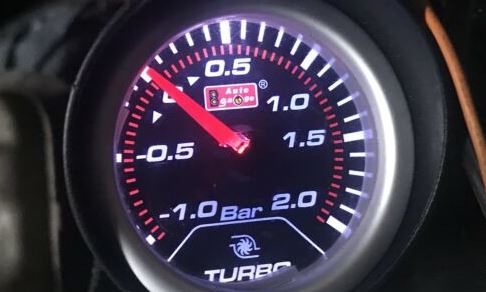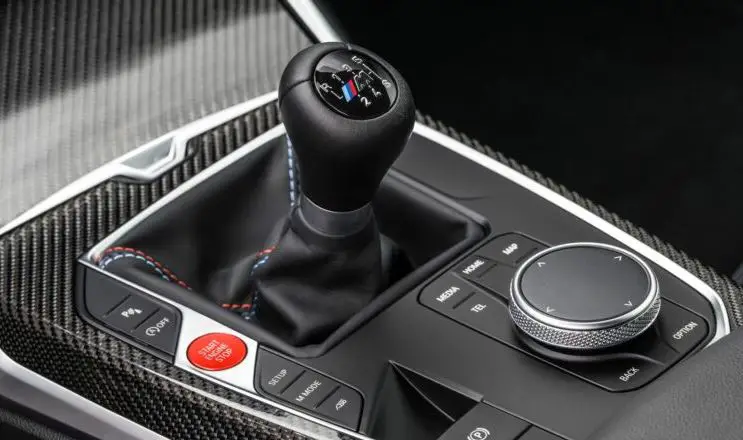Turbocharged cars are becoming more and more popular, and if you own one, it’s important to know how to read the boost gauge. What is boost in a turbo car and what does it mean?What is the purpose of a boost gauge and how do they work? How is boost measured? Do you need a boost gauge in your car? In this article, we will answer all of these questions and more.
So, let’s get started!
What Is Boost In A Car?
When talking about turbocharged cars, the term “boost” refers to the increase in pressure that the turbocharger creates. This extra pressure forces more air into the engine, which allows for more fuel to be burned and results in more power.
Boost also has an effect on how an engine runs. More boost means more power, but it can also make an engine run richer (more fuel being burned) and make it more susceptible to detonation (spark knock). Too much boost can also cause the engine to “flame out” or “blow up.”
The amount of boost an engine can safely handle is determined by its design. Most engines can handle between 10 and 20 psi (pounds per square inch) of boost, but some can handle more.
To get the most power out of a turbocharged engine, it is important to keep the boost pressure within the safe limits for that particular engine.
How Is Boost Measured?
Boost is typically measured in either psi (pounds per square inch) or bar. One bar is equal to 14.5 psi, so if an engine is said to be running “1 bar of boost,” that means it is experiencing 14.5 psi of extra pressure.
Most turbocharged engines will run between 0.5 and 1.5 bar (7-22 psi) of boost, though some can handle more.
To measure boost, you need a boost gauge.
What Is A Boost Gauge?
A boost gauge is a pressure gauge that is mounted in the car and connected to the engine’s intake manifold. The gauge will show you the amount of boost (pressure) that the engine is currently creating.
What Are The Different Types Of Boost Gauges?
There are two main types of boost gauges for turbocharged cars – mechanical and electrical.
Mechanical boost gauges work by using a pressure-sensing diaphragm that is connected to a needle, which moves in response to changes in boost pressure. This type of gauge is very simple and reliable, but can be less accurate than electrical gauges.
Electrical boost gauges work by using a sensor that converts changes in boost pressure into an electrical signal. This signal is then sent to a gauge, which displays the information digitally. Digital gauges tend to be more accurate than mechanical ones, but they can be more complex and expensive.
How To Read A Mechanical Boost Gauge
Reading a mechanical boost gauge is fairly straightforward – the needle will move in response to changes in boost pressure. If the needle is pointing to the left, that means there is no boost; if it is pointing to the right, that means there is boost.
The further to the right the needle moves, the higher the amount of boost. Most gauges will have markings on them that indicate different levels of boost, so you can tell at a glance how much boost your engine is producing.
How To Read An Electrical/Digital Boost Gauge
Electrical or digital boost gauges will usually have a needle or digital display that shows the current boost pressure. Most gauges will also have some sort of peak hold feature, which allows you to see the highest amount of boost that was achieved during a given driving period.
Some electrical gauges also have other features, such as warnings for when boost pressure gets too high. These can be helpful in preventing engine damage, but are not always necessary.
What Should A Boost Gauge Read At Idle?
At idle, most engines will produce between 0.0 and 0.25 bar (0-0.36 psi) of boost. This is because the turbocharger is not spinning fast enough to generate much pressure.
Some engines may produce slightly more boost at idle, but this is usually nothing to worry about unless it is accompanied by other symptoms, such as engine misfires or strange noises.
What Should A Boost Gauge Read Under Normal Driving Conditions?
Under normal driving conditions, most engines will produce between 0.25 and 0.75 bar (0.36-11 psi) of boost. This is because the turbocharger is spinning fast enough to generate some pressure, but not so fast that it is creating too much boost.
If your engine is producing less than 0.25 bar (0.36 psi) of boost, it may be running too lean and could cause engine damage. If your engine is producing more than 0.75 bar (11 psi) of boost, it may be running too rich and could also cause engine damage.
What Should A Boost Gauge Read When The Engine Is Under Full Load?
Under full load, most engines will produce between 0.75 and 0.95 bar (11-14 psi) of boost (this will be higher if your car is tuned). This is because the turbocharger is spinning as fast as it can to generate maximum pressure.
Do You Need A Boost Gauge?
Whether or not you need a boost gauge in your car depends on a few factors. If you are just using your car for street driving and never plan on taking it to the track or pushing it hard, then you probably don’t need one.
However, if you are planning on modifying your car or driving it hard, then a boost gauge can be a good idea. It can help you keep an eye on the amount of boost your engine is producing and make sure that it stays within the safe limits.
Is A Boost Gauge Only For a Turbocharged Car?
While most people associate boost gauges with turbocharged cars, they can actually be used on any vehicle with forced induction. This includes both turbocharged and supercharged cars. So if you have either type of car, you can consider buying a boost gauge.
Is A Boost Gauge The Same As A Boost Controller?
Boost controllers and boost gauges are not the same thing!
A boost controller is a device that regulates the amount of pressure in the intake manifold by controlling the opening and closing of the wastegate. While a boost gauge and boost controller both measure and control pressure in the intake manifold, they serve different purposes. A boost controller is used to regulate how much pressure is sent to the turbocharger, while a boost gauge simply measures the amount of pressure present in the system.









